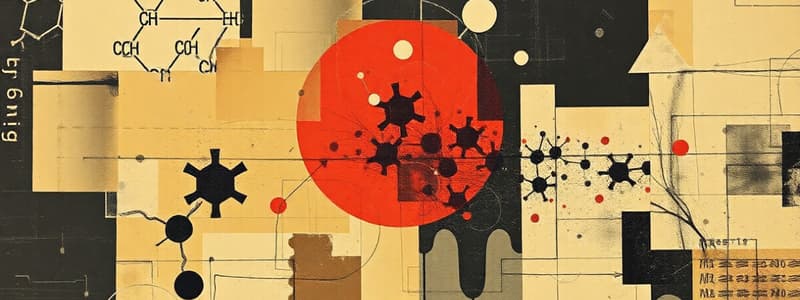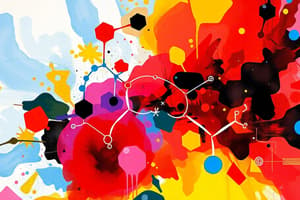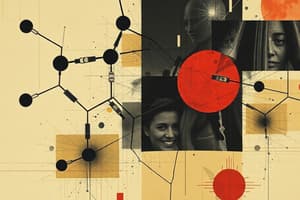Podcast
Questions and Answers
What is the main characteristic of addition polymers regarding their structure?
What is the main characteristic of addition polymers regarding their structure?
- They are formed from alkenes by breaking the double bond. (correct)
- They contain double bonds in the repeating unit.
- They are created from saturated hydrocarbons.
- They have ionic bonds in their structure.
How do high pressures and temperatures affect the properties of addition polymers?
How do high pressures and temperatures affect the properties of addition polymers?
- They produce straight chain polymers with strong intermolecular forces.
- They yield branched chain polymers with weak intermolecular forces. (correct)
- They result in polymers that have a high degree of crystallinity.
- They cause the formation of cross-linked polymers that are rigid.
What is a common application of poly(ethene)?
What is a common application of poly(ethene)?
- It is used for creating durable automotive parts.
- It is commonly used for making shopping bags. (correct)
- It is utilized in the production of electronic components.
- It is mainly used for high-temperature insulation.
Why are addition polymers generally not biodegradable?
Why are addition polymers generally not biodegradable?
What property does PVC gain when plasticisers are added during its production?
What property does PVC gain when plasticisers are added during its production?
What characteristic defines alkenes?
What characteristic defines alkenes?
What happens when alkenes react with bromine water?
What happens when alkenes react with bromine water?
What is a carbocation?
What is a carbocation?
Which of the following electrophiles is NOT commonly associated with alkenes?
Which of the following electrophiles is NOT commonly associated with alkenes?
Which statement about carbocation stability is true?
Which statement about carbocation stability is true?
When an alkene reacts with sulphuric acid, what product is formed?
When an alkene reacts with sulphuric acid, what product is formed?
What is the effect of a π bond in alkenes during a reaction?
What is the effect of a π bond in alkenes during a reaction?
What is the primary characteristic of electrophiles?
What is the primary characteristic of electrophiles?
Flashcards are hidden until you start studying
Study Notes
Alkenes
- Alkenes are unsaturated hydrocarbons, meaning they contain a carbon-carbon double bond.
- This double bond is an area of high electron density, making it susceptible to attack by electrophiles.
- An electrophile is an electron acceptor, attracted to areas of high electron density.
- Bromine water is used to identify unsaturated compounds.
- The solution turns from orange-brown to colourless if a double bond is present.
Electrophilic Addition
- Alkenes undergo electrophilic addition reactions which occur at the double bond.
- Electrophiles include HBr, Br2 and H2SO4.
- They can be used to form alkyl hydrogensulphates or halogenoalkanes from alkenes.
- The reaction mechanism involves the electrophile attacking the double bond, leading to the formation of a carbocation.
- A carbocation is a carbon atom with only three bonds and carries a positive charge.
- The stability of carbocations varies, with tertiary being the most stable and primary the least stable.
- More stable carbocations are more likely to form.
- The major product of an electrophilic addition reaction will always be the most stable carbocation.
Addition Polymers
- Addition polymers are formed by breaking the double bond in alkenes to form a repeating unit.
- The repeating unit is shown with extended bonds through brackets to show that it bonds to other repeating units.
- Different reaction conditions can give the plastics produced different properties.
- High temperatures and pressures produce branched chain polymers with weak intermolecular forces.
- Lower temperatures and pressures produce straight chain polymers with strong intermolecular forces.
- Polymers have multiple strong non-polar covalent bonds, making them unreactive.
- This property means they are useful for manufacturing everyday plastic products.
- However, their unreactive nature also means they are not biodegradable.
Poly(chloroethene) (PVC)
- PVC is an addition polymer with waterproof properties.
- These properties are gained by the addition of plasticisers during the reaction.
Studying That Suits You
Use AI to generate personalized quizzes and flashcards to suit your learning preferences.




